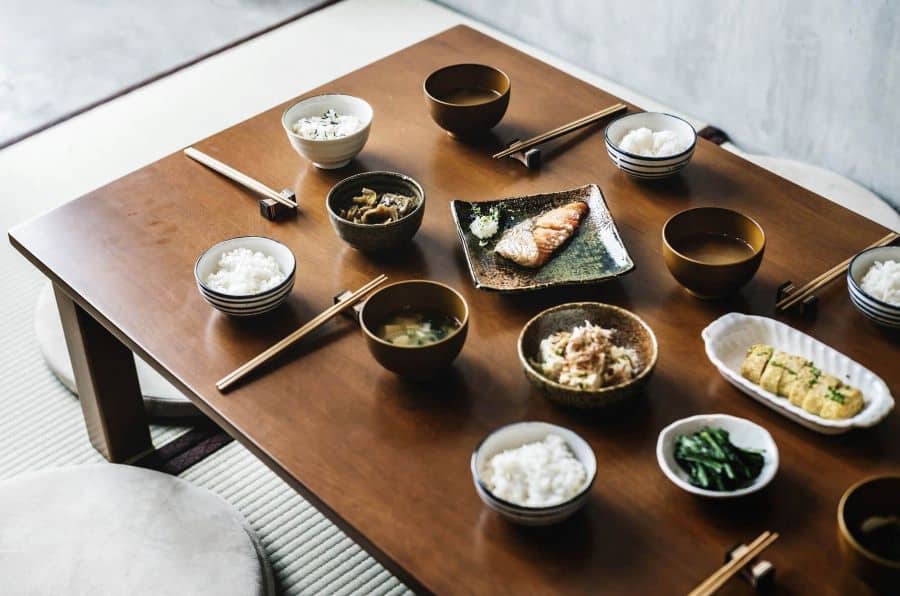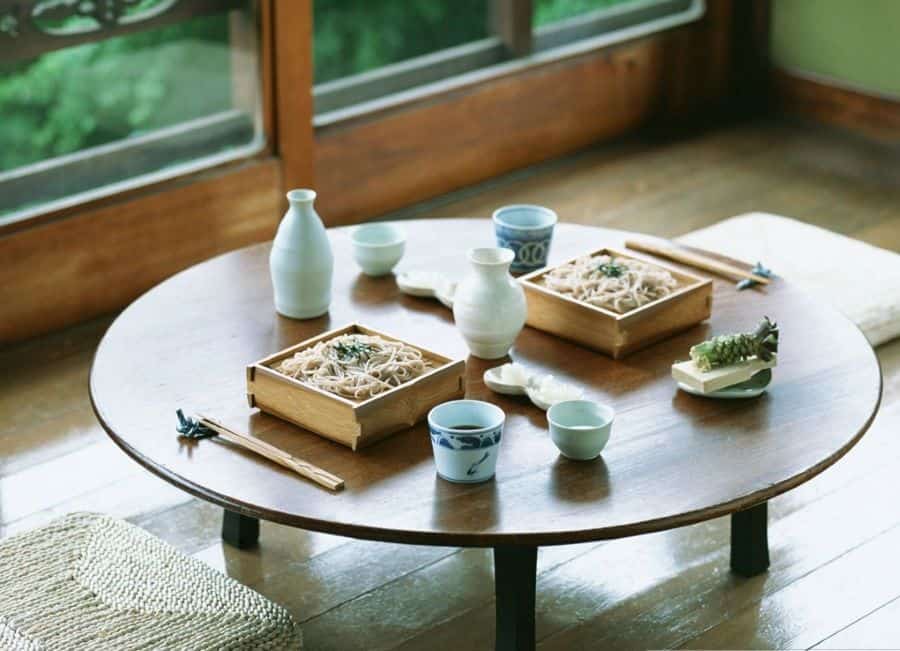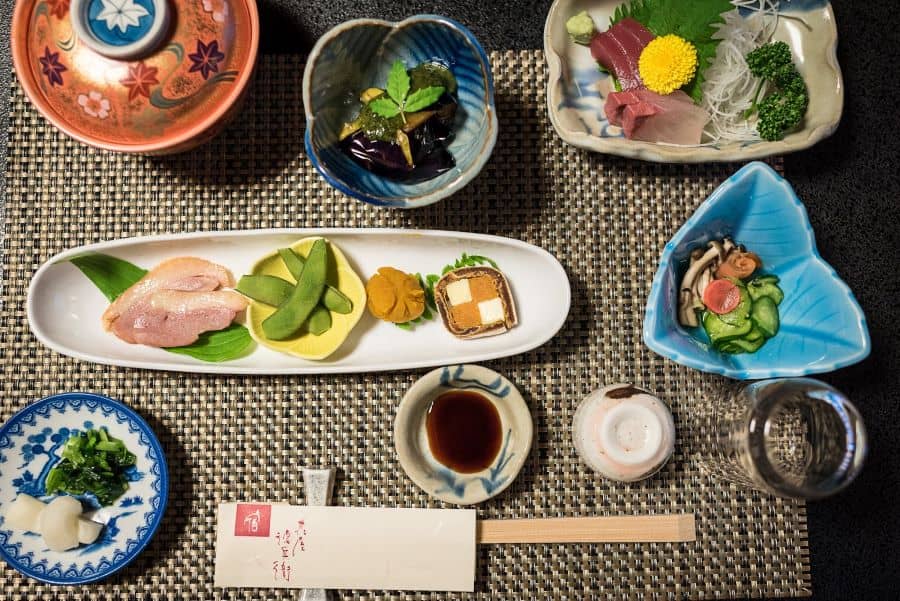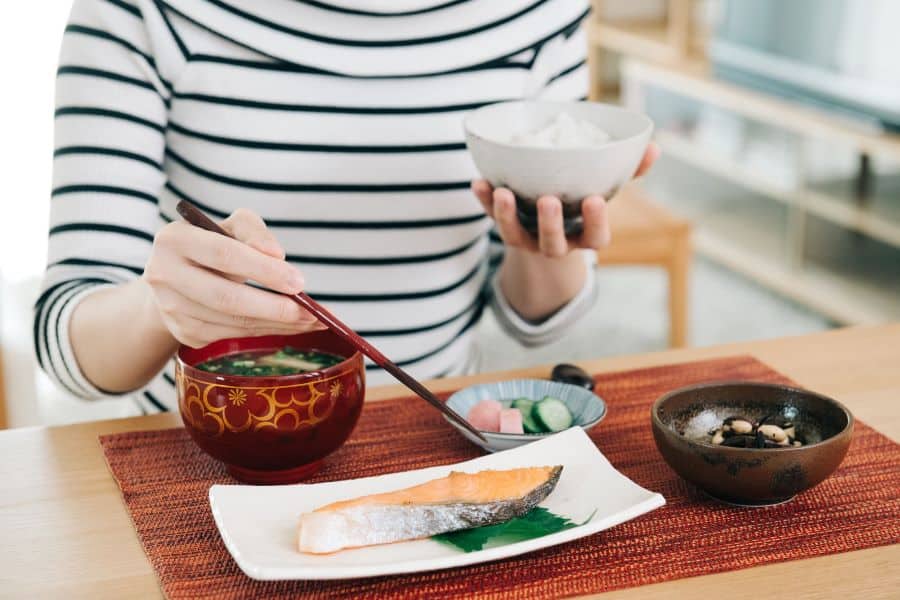Japan
Traditional Japanese Table Setting and Manners
Over the centuries, there has been a variation in the traditional table settings of the Japanese; this is partly caused by the dining table types utilized in different times or periods.
Early in history, hazoken were box-shaped small tables that were used. Each individual had trays or hazoken on the ground. Later on, tables with low profile and larger were used in sitting a few people at a table. This table is referred to as chabudai.

Later on, chairs and tables of the western style replaced these low tables. The traditional Japanese table setting is usually centered on a special configuration – soup plus three – which is referred to as Ichiju Sansai; it is composed of five bowls and plates.
Creating the Right Table Setting with Japanese Tableware
Looking for a Japanese table? Visit the article Chabudai table – the traditional japanese low table reviews
The culture of the Japanese, as well as how they dine are embraced by the Japanese tableware. Just the same way they face everything with great attention, their tableware and eating utensils are designed to complement their detailed ways.
In the culture of Japan, food arrangement on the table is as significant as the food to be served. Also, it is believed that the feel, color, and shape of dishes utilized plays a vital role in enhancing the general eating experience further by ensuring that their food looks more appealing.
All objects placed on the eating table come with a purpose; different food types are served with different utensils. Though there has been a variation in the country’s traditional table setting over the centuries, some items available really represent Japanese fine dining.
Japanese Chopstick Rests and Chopsticks
Traditionally referred to as ‘hasioki’ and ‘hashi’, both items form an important part of all traditional Japanese table settings. Also, they seem to be the most known eating utensils utilized in Asian dining. When resting the chopsticks on the chopstick rest, ensure that their points face the left direction, thereby forming a parallel line to the table.
Want to learn how to use chopsticks like a Japanese? Visit this article – How to Use Chopsticks Like a Japanese?

Japanese Sake and Tea Sets
Japanese tea sets look smaller compared to the modern Western type. The majority of teacups lack handles and their teapots have their top usually flattened with a handle made of Bamboo. Carafes or sake pots, however, come with a more cylindrical shape, with the complete sake set comprising four cups and a single pot.
Japanese Vases
Vases from Japan are usually more often patterned with complicated details and can serve as great gifts. There are smaller ones, which can hold just one flower and can be used as an ornament.
Japanese Dishes and Bowls, Plates and Crackleglaze
Japanese dishes and bowls are usually round and smooth in shape. They have a small size to enable the user to pick them up easily to drink or eat from.
Crackleglaze is made of decorative dishes that are designed from a beautiful cracked glazed glass. They also used in serving food and are great for dipping sauces
The Japanese plates usually come with a rectangular shape and are meant for serving purposes.
Sushi Sets
The Japanese sushi sets are usually made up of a sushi plate to serve the sushi, two chopsticks sets, and two dishes; one of these dishes is used for holding the wasabi, while the other is for the soy sauce.

Japanese Table Setting Manners
Have you ever wondered why lids are always seen on the tableside bowls of the Japanese? Culinary poetry is the answer. The cover gives the food a mysterious look by keeping it hidden. Once it is opened, the food’s aroma comes out twice as strong.
The fact is that the Japanese have somehow transformed their table setting manners to become an art, which people have now seen to be more important to their culture compared to the food. The thought of creating an elegant and beautiful atmosphere to dine in is a very lovely one.
It is an essential presentation. Dishes and bowls that are carefully selected bring in some harmony between the plates, the ingredients, and the meal. The Japanese lack matching dishes usually found with the Europeans, rather theirs are assembled in an abstract painting form for every feast organized. Different dishes’ materials are utilized in each place setting like glass, cedar, ceramics, metal, and bamboo.
During winter, the setting of the table place should bring in springtime weather memories. Conversely, during the summer, the dishes have to be cold to work in line with the wintery days. Seasons are usually significant symbols coupled with anything that replicates nature.
For instance, plates utilized during the winter season may have different colors of “red”, which indicates heat. During the summer period, it is normal to expect a glass plate that is cold and icy, which will ensure the sashimi is kept cool for long periods.
Immediately, the table is harmoniously set with nature, we expect the guests to follow some traditional manners as they dine. If you plan to visit a restaurant in Japan, whether far from home or close to Japan, ensure you take some notes on the right behaviors.
For instance, you should not pour out soy sauce that you will not consume. Get your hands washed with warm towels at the table. Ensure that every grain of rice in your bowl or plate is eaten up. Also, whatever the case may be, avoid burping, blowing your nose, or making some audible sounds during a meal. These are very important manners you need to adhere to.

Conclusion
The traditional Japanese table setting stands out and everything present holds high value. We have taken our time to explain the different items that represent Japanese dining. You can visit any Japanese shop today to dress your table with some beautiful Japanese tableware. We have also discussed some table manners that must be adhered to in a traditional Japanese table setting. With all these, we are sure you’ll have a great time while visiting Japan.
